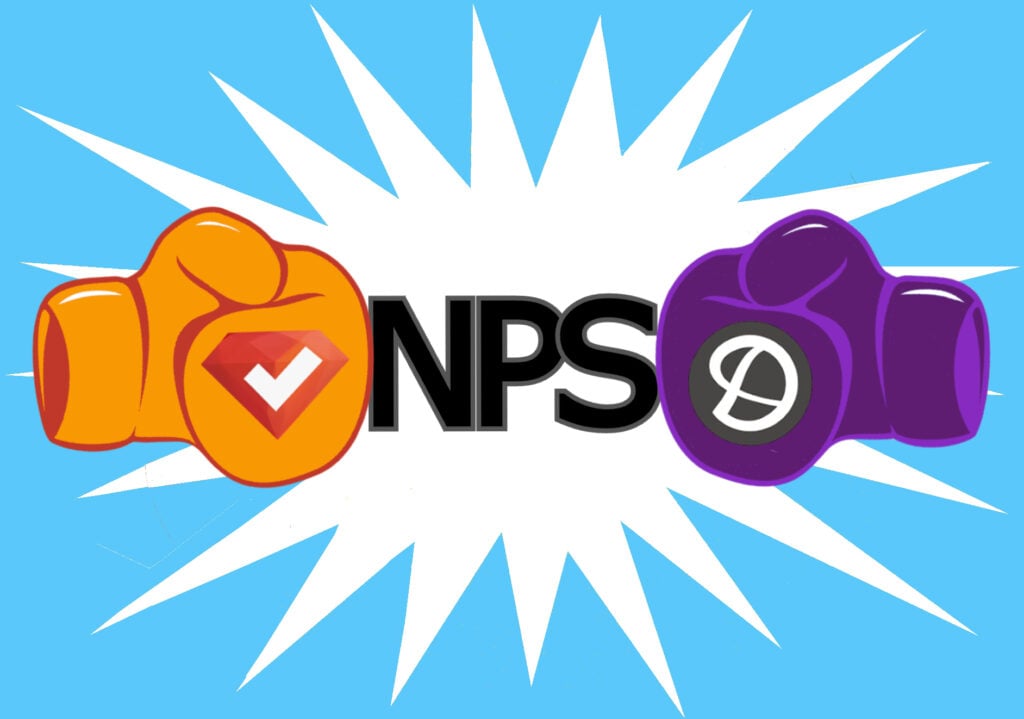In math, 360-degrees refers to a full circle, which is why we say that a 360-degree view provides the ability to see everything around you with no blind spots. That’s the idea behind a 360-degree review – giving company leadership a complete, well-rounded picture of each employee. In this blog, we’ll look at seven examples of 360 reviews using different types of questions.
Create your free 360 degree review survey or questionnaire now!
Why 360 Assessment is Important
360-degree surveys are administered not just to an employee’s immediate boss, but to a cross-section of their peers. This could include a number of their peers, employees that directly report to them, and some functional managers whom the employee frequently interacts with. Each employee also evaluates their own performance.
This is important because it gives everyone in the organization a chance to be heard. Most 360 reviews focus directly on skills and contributions an employee makes, looking at areas such as accountability, leadership, interpersonal skills, problem-solving abilities, teamwork, and vision (some of these will vary depending on the person’s position).
Each person then has the opportunity to highlight some of the great work they’re seeing from teammates and management, or to voice their concern about problematic employees or management techniques.
The Problem with 360-Degree Reviews (and the Solution)
There is an elephant in the room when it comes to 360 degree surveys. Because some employees may have to complete so many of them, they can quickly become tedious (Clear Review reports that, on average, completing the 360-degree questionnaire process takes roughly 2 – 4 weeks). As a result, they may rush through them in order to complete them, not painting a fair picture of the person they are reviewing. This can ultimately impact an employee’s advancement potential, salary increase, or their job.
One way to break through the monotony of 360 degree reviews is to use different types of survey questions on them. This way, employees cannot just go through the motions; they’ll have to actively engage with the survey. We highlight seven examples below!
7 Examples of 360 Reviews With Different Types of Questions
In a previous blog post, 360 Degree Feedback Questions for Employers + Sample Performance Review, we highlighted the top 30 360-degree survey questions. Now, let’s see examples of the 360 survey questions posed in different types of question formats using SurveyLegend’s free free 360 degree survey tool.
Thumb Rating Example
For this 360-degree survey question, the popular thumbs up/thumbs down rating as popularized by movie critic Roger Ebert is employed. Simple, yet effective!

Multiple Choice Example
A popular choice for 360-degree surveys is multiple choice. Just be sure to have respondents select all that apply (SurveyLegend allows you to include instructions, as seen in the example below).

Image-Based Example
Picture surveys are more popular than ever as they can engage people like no other type of survey question. Adding images to surveys adds clarity to questions and/or answers, crossing language barriers, stirring memory, and more. Be sure to read our blog on the 7 Benefits of Using a Picture Survey or Poll.

Emoji-Based Survey Example
Emojis convey a lot of emotion, and people are predisposed to using them due to the overwhelming popularity of texting (people send 18.7 billion texts to each other globally every day!). Emojis have become shorthand for feelings, so emoji surveys a good way to get people to answer 360-degree surveys.

Star Rating Survey Example
Stars, as popularized by restaurant rating system Zagat, are always a good choice. Plus, everyone understands one star is bad and five stars are great so there’s no room for error!

Slider Rating Survey Example
The slider rating scale is interactive, which can increase engagement and response rates. Here, respondents are instructed to slide the bar along the scale based on how well they believe the employee meets the question criteria.

Matrix Survey Example
A matrix survey is an easy way to ask a lot of questions without the survey looking daunting. That’s because, in order to get to the next question, respondents don’t need to scroll; they simply click the arrow which pulls up the next question. The survey answers, however, remain the same.

Opinion Scale Survey
We know you cannot see all the 360 degree review questions for the vision survey in our static matrix example. So, we’ve created the vision survey again, using one more type of question. This time, we used an opinion scale, asking respondents to provide their feedback on a scale of one to five. This is another great option for 360 reviews.

Conclusion
A 360 degree feedback survey gives employees a chance to review their peers, and provides leadership with a more well-rounded picture (or a 360-degree look) at various employees. May employers also have each employee complete a 360 assessment on themselves, as a means of personal reflection.
Ready to create your free 360 degree survey? Start today with SurveyLegend! As you’ve seen, our surveys are beautifully rendered and allow you to add photos to surveys. But it’s also very easy to use! See for yourself and start creating by clicking the button below!
Do you administer 360 surveys at your company? Do you find them impactful? Thinking of trying SurveyLegend to mix up the different types of questions? Let us know in the comments!
Create your free 360 degree review survey or questionnaire now!
Frequently Asked Questions (FAQs)
A 360 degree review collects employee performance feedback from all directions in the company: an employee’s manager, several peer colleagues, direct reports, and sometimes other functional managers who the employee frequently interacts with.
If a survey is completely anonymous, people could be less inclined to lease useful feedback, or could target someone they don’t like. If it is not anonymous, people may be hesitant to provide their true feelings for fear of repercussion. Ultimately, anonymity is up to each employer – and SurveyLegend gives you the option to make surveys anonymous or not.
Most 360 reviews focus directly on skills and contributions an employee makes, looking at areas such as accountability, leadership, interpersonal skills, problem-solving abilities, teamwork, and vision.





